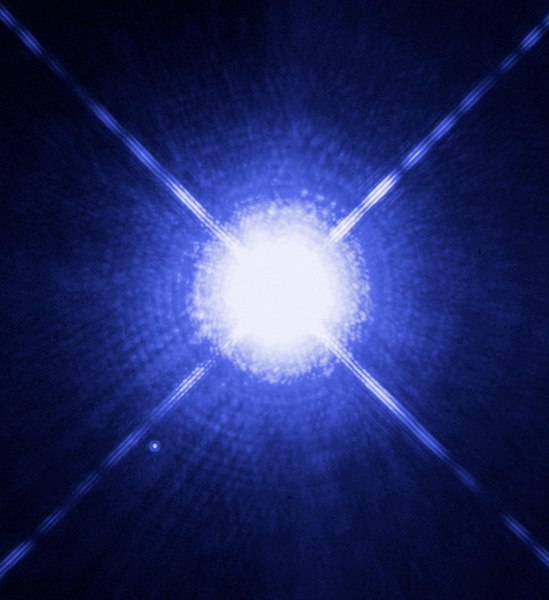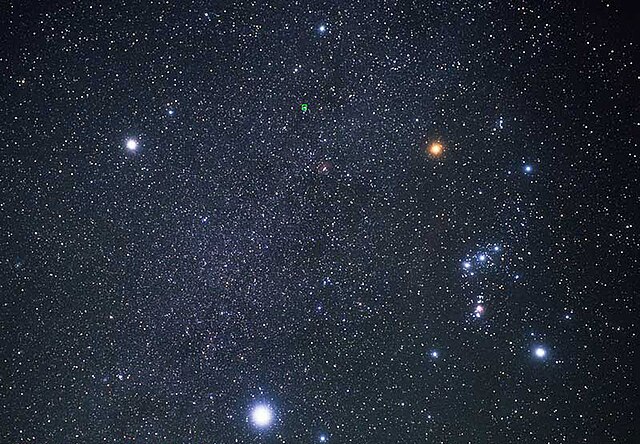Sirius is the brightest star in the night sky. Its name is derived from the Greek word Σείριος, meaning lit. 'glowing' or 'scorching'. The star is designated α Canis Majoris, Latinized to Alpha Canis Majoris, and abbreviated α CMa or Alpha CMa. With a visual apparent magnitude of −1.46, Sirius is almost twice as bright as Canopus, the next brightest star. Sirius is a binary star consisting of a main-sequence star of spectral type A0 or A1, termed Sirius A, and a faint white dwarf companion of spectral type DA2, termed Sirius B. The distance between the two varies between 8.2 and 31.5 astronomical units as they orbit every 50 years.
Hubble Space Telescope image of Sirius A and Sirius B. The white dwarf can be seen to the lower left. The diffraction spikes and concentric rings are instrumental effects.
Sirius (bottom) and the constellation Orion (right). The three brightest stars in this image—Sirius, Betelgeuse (top right) and Procyon (top left)—form the Winter Triangle. The bright star at top center is Alhena, which forms a cross-shaped asterism with the Winter Triangle.
A Chandra X-ray Observatory image of the Sirius star system, where the spike-like pattern is due to the support structure for the transmission grating. The bright source is Sirius B. Credit: NASA/SAO/CXC
Apparent magnitude is a measure of the brightness of a star or other astronomical object to an observer on Earth. An object's apparent magnitude depends on its intrinsic luminosity, its distance, and any extinction of the object's light caused by interstellar dust along the line of sight to the observer.
Asteroid 65 Cybele and two stars, with their magnitudes labeled
Image of 30 Doradus taken by ESO's VISTA. This nebula has a visual magnitude of 8.





